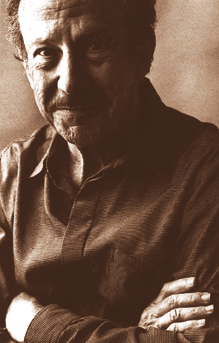Chico O’Farrill was a key figure in the rise of Afro-Cuban Jazz during the 1940s and 1950s. From Cuba, Chico O’Farrill arrived in New York at a time when musicians such as Dizzy Gillespie, Machito, and others were beginning to create a unique fusion of Cuban and bebop music. He quickly became a major figure in this movement. Ironically, he admitted to having a low opinion of Cuban music before he moved to the USA. He found it lacking in depth and compared it to jazz. He was inspired by the new music and found a way to use his native music after his initial exposure. Arturo O’Farrill was born to a well-to-do, respectable family in Havana. His father was Irish and his mother German. He was exposed to big band jazz and learned trumpet at a Georgia military school. Although his parents wanted him to study law, they were deeply disappointed by his musical preferences. However, they eventually made arrangements for him to study composition under Felix Guerrero, a Cuban composer. He continued his education in Havana’s jazz clubs and played trumpet in many Cuban bands before moving on to New York. Benny Goodman hired him to arrange and he also wrote the “Undercurrent Blues”. He was also an “invisible” assistant to other arrangers, such as Walter Fuller or Quincy Jones. In December 1950, Norman Granz arranged his first major contribution to Afro-Cuban Jazz. O’Farrill’s richly wrought, but still vibrant The Afro-Cuban Jazz Suite is widely regarded as a landmark work in adapting Cuban music into a modern jazz bigband. It featured Charlie Parker and Flip Phillips, along with Buddy Rich. Afro-Cuban Jazz was described by O’Farrill as a “very delicate marriage” in which all aspects of the music needed to be in harmony. Granz recorded several more albums in 1951-4. O’Farrill also recorded The Second Afro-Cuban Suite, in 1952. This was a more reflective and gentle piece that O’Farrill considered more satisfying than its predecessor. He also led his own band and composed The Manteca Suite in 1955 for Dizzy Gillespie, expanding on the famous 1947 hit. He also arranged for Stan Kenton, Stan Getz, and Stan Kenton. He left the USA for a decade after a failed marriage and legal problems. After a decade in Cuba, he returned to the USA and moved to Mexico in 1957. He remained there until 1965 recording and performing with local bands. One of his most important compositions is The Aztec Suite for Art Farmer, a trumpeter. In 1965, he returned to New York and settled down there. He worked with artists such as Count Basie and Gato Barbieri. However, he became disillusioned by the requirement that he write in Afro-Cuban. He refused to compromise his standards and said that if he couldn’t record and perform his music with an adequately prepared big band, then he wouldn’t record. In 1975, he was reunited again with Machito, Gillespie, for Afro- Cuban Jazz Moods. However, he remained a prolific composer of music for television, commercials and other less predictable projects. His remarkable comeback began with the 1995 release of Pure Emotion. Todd Barkan, his producer at Fantasy Records gave him his head in studio. The album was nominated in 1999 for a Grammy Award and its successor, Heart of a Legend in 1999. In 2000, Carambola was released and he was also featured in the critically acclaimed film Calle-54. In 1995, he wrote a commission piece for Lincoln Center featuring Wynton Marsalis. He also led his own big band at Birdland with his son, pianist Arturo O’Farrill. Arturo took over the band’s management earlier in the year. His wife Lupe, Arturo, and Georgina are his survivors. from http://www.jazzhouse.org
